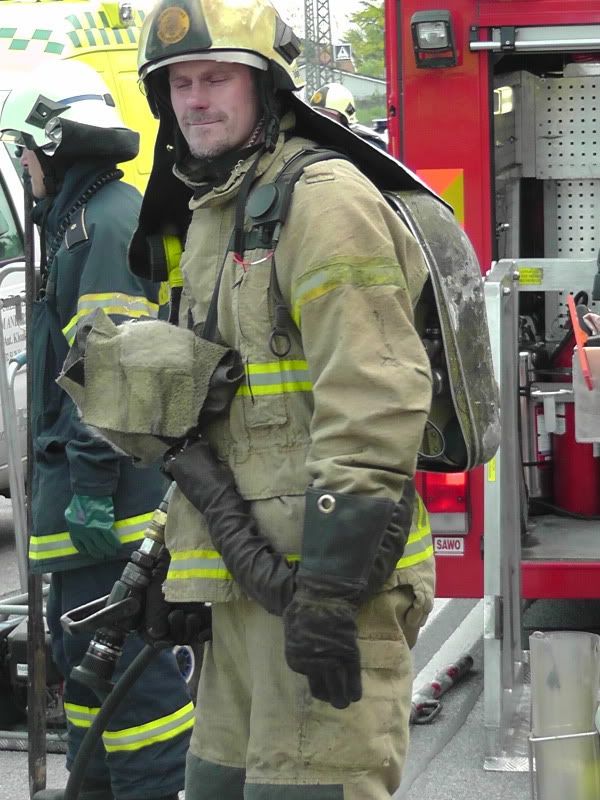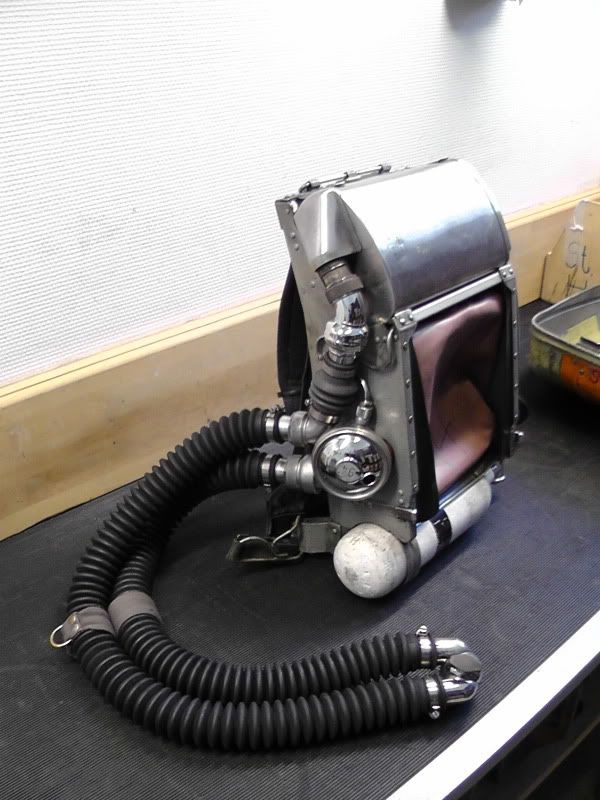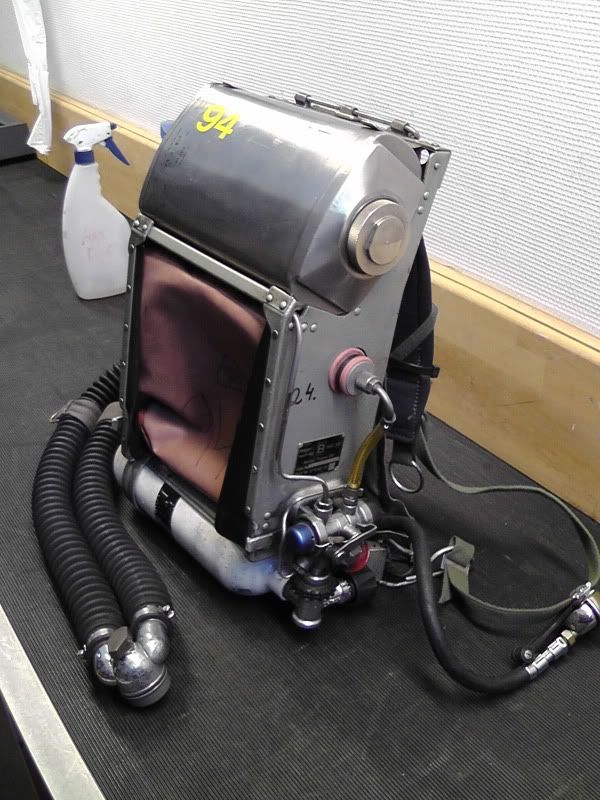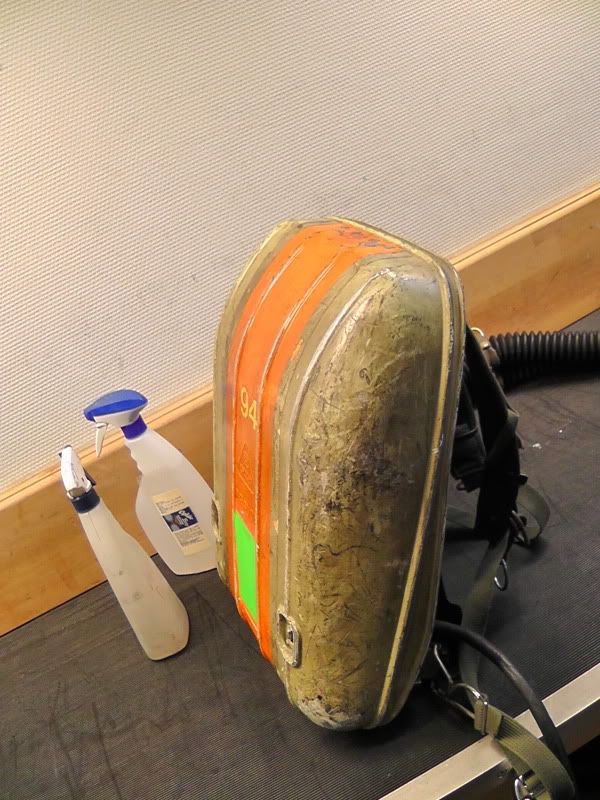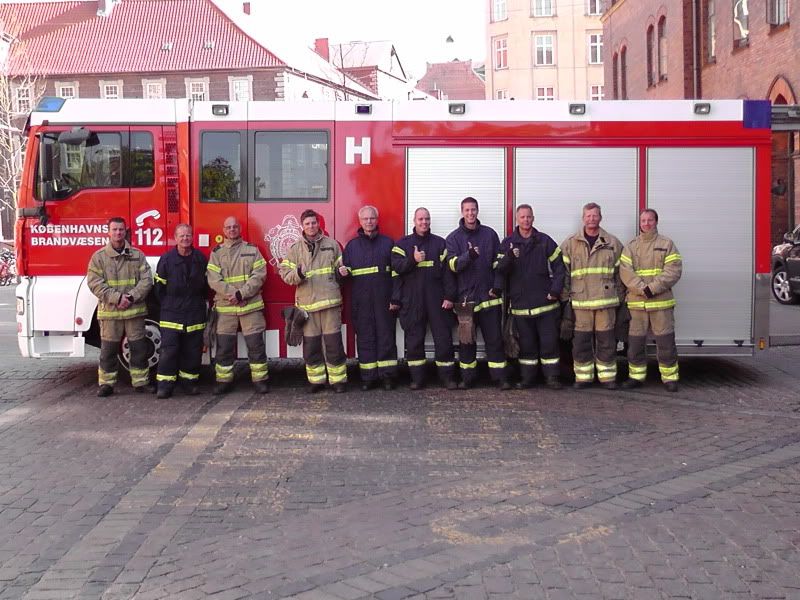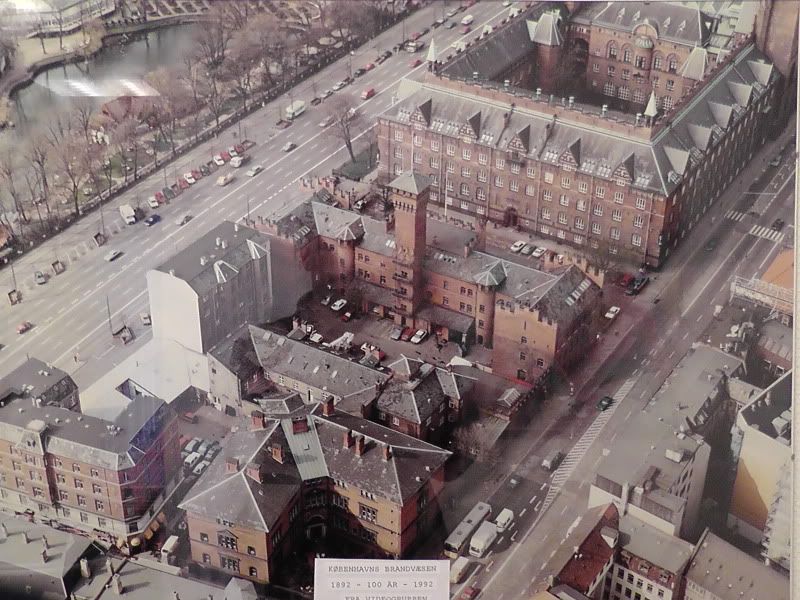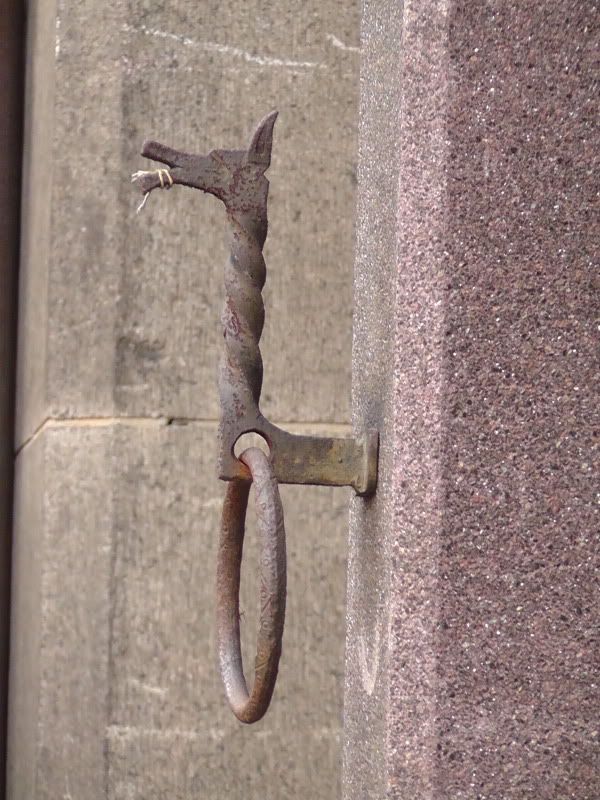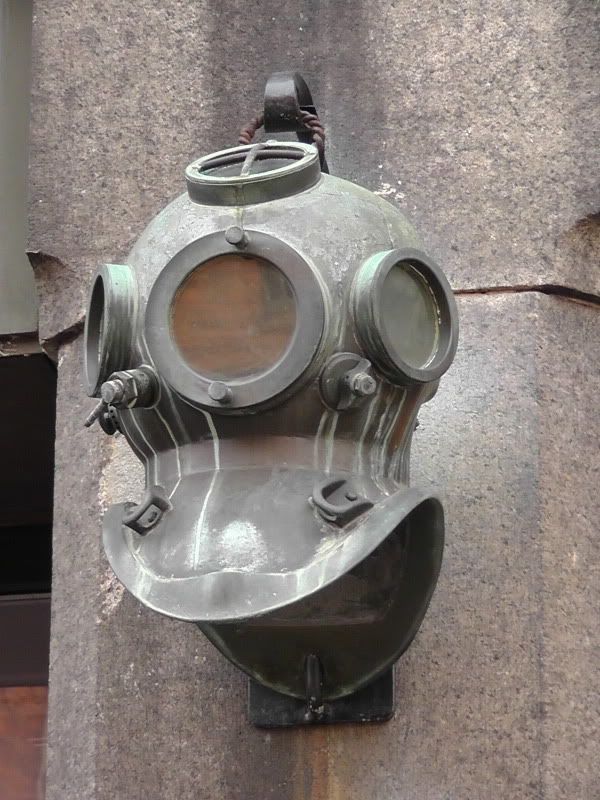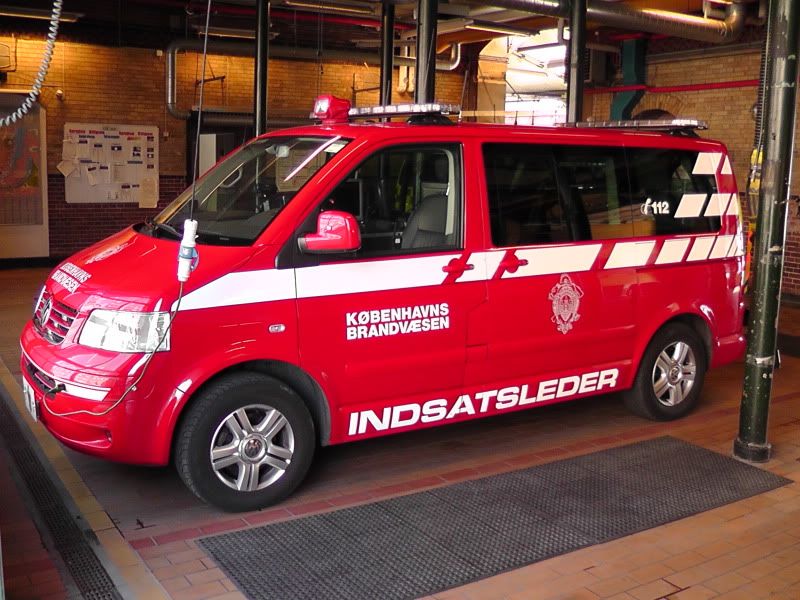Normal CFB firefighters used a very standard compressed air, composite cylinder, open-circuit SCBA, without any of the bells and whistles I've grown accustomed to. No PASS alarm, RIT connection, or Heads Up Display (HUD).
The CFB "Smoke Divers" however, use a closed circuit SCBA which was actually designed for mine rescue operations. These packs enable firefighters to operate in an IDLH (Immediate Danger to Life and Health) for two hours! Two hours you say? They must be very heavy and cumbersome right? Nope. They're packs weigh slightly less then my Scott 45 minute SCBA, and are actually smaller in profile.
How does that work you say? Well, I'll tell you.
- 100% oxygen is supplied from a 1 liter cylinder at the bottom of the pack
- O2 fills a rubber lung in the middle of the pack
- O2 is breathed from the rubber lung and exhaled via the black corrugated lines
- Exhaled O2 and CO2 go to the filter at the top of the pack
- CO2 is filtered from the O2 using a dry chemical similar to lime stone
- Remaining O2 returns to the rubber lung to be breathed again
The major problem with the SCBAs is that the filtering system relies on and exothermic chemical reaction (heat generating reaction) to remove the CO2. This means that after the firefighters has been wearing the pack for and hour they're O2 will start being hotter and hotter. This problem is compounded in a fire by the fact that the SCBA attracts and holds the radiant heat from the fire.
Now every safety conscious firefighter is saying that is unsafe to be in a fire for an hour let alone two, what is the point of having a pack that last for so long?
CFB has the Smoke Diving packs to fight tunnel fires, which may require firefighter to travel through a smoke filled environment for quite some time before actually engaging the fire. Smoke Diver's wear these packs for all firefighting operations to stay familiar with they're use.
What I noticed when wearing one, was that since you're breathing from a non-pressurized source (the rubber lung) there isn't any sound with your breathing. This was simultaneously unnerving and really nice, nice because it was easier to hear what was going on outside of my mask, but unnerving because I didn't know if I was breathing without the familiar sound of my regulator giving me another shot of air.
Smoke Divers SCBA with protective cover


